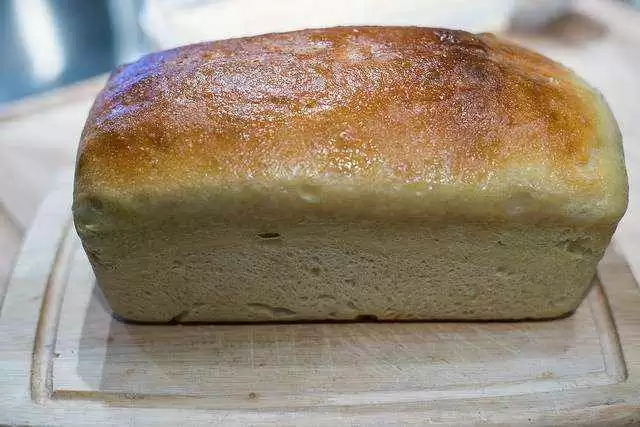.webp.fe6c78a394a908c8426b482004aaf7be.webp)
Celiac.com 05/17/2016 - The paleolithic diet, or paleo diet which happens to be gluten-free, has been growing increasingly popular among athletes and health advocates, but it has a history dating back to the mid-1970's as a means of preventing diseases and health conditions such as autoimmune diseases and cancer, when investigations were made of the eating patterns of our hunter-gatherer ancestors.
 The paleo gluten-free diet, the "biologically appropriate" diet, is named for the Paleolithic era, which extended 2.5 million years ending in 10,000 B.C. with the advent of agriculture and animal husbandry. It's comprised of the foods our human ancestors consumed during this period, namely wild-caught fish, grass-fed meats, fruits, vegetables, roots, and nuts. Any "modern" foods introduced from the agricultural era forward such as grains, dairy, sugar, and processed foods are eliminated.
The paleo gluten-free diet, the "biologically appropriate" diet, is named for the Paleolithic era, which extended 2.5 million years ending in 10,000 B.C. with the advent of agriculture and animal husbandry. It's comprised of the foods our human ancestors consumed during this period, namely wild-caught fish, grass-fed meats, fruits, vegetables, roots, and nuts. Any "modern" foods introduced from the agricultural era forward such as grains, dairy, sugar, and processed foods are eliminated.
Celiac.com Sponsor (A12):
People all over have found the paleo gluten-free diet is an effective answer for weight loss, optimizing health and fitness—and building muscle tone. According to research, pre-agricultural humans were free of the diseases of the civilized world such as cardiovascular disease, cancer, obesity, and autoimmune diseases. Modern studies, including clinical studies, have shown as well that the paleo diet and the restoration of the lifestyle conditions of our ancestors, such as exercise, have resolved numerous diseases.
The theory behind the diet, supported by extensive archeological and anthropological evidence, is based on the premise that modern humans do best on paleolithic nutrition because human genetics have largely remained the same since the pre-agricultural era and thus our genetic makeup is best suited to the ancestral human diet.
If you're looking to build muscle tone, meet with a qualified health practitioner to see if the diet is for you. I think you'll find that whatever your reason for starting the paleo diet and lifestyle, whether to optimize your fitness routine, lose weight, alleviate autoimmune disease symptoms such as celiac disease, or increase your longevity, eating in the biologically appropriate way for our bodies not only has the power to change your body and your health, but your quality of life.
While many people are eating paleo gluten-free as a way to correct health conditions or improve their overall health, active individuals and athletes have been following the diet in order to lose fat and build muscle more efficiently, according to MuscleMag.
In fact, one of the best known proponents of the paleo diet, Robb Wolf, former biochemist and author of The Paleo Solution, regards the diet as performance-enhancing and trains world-class athletes at his gym in Chico, California.
According to Robb, our human ancestors were taller, leaner, and better built than humans now, as anthropological evidence shows us. According to MuscleMag, only during the last 10,000 years, since the advent of agriculture, have humans consumed grains, legumes and dairy—and during this same period, humans have also become "significantly shorter, fatter, less muscular and more prone to disease," as anthropological studies point out. Let's take a look at some of the reasons why the paleo gluten-free diet is optimum for building muscle tone.
The paleo gluten-free diet, consisting wholly of unprocessed foods like seafood, lean meat, fruits and vegetables, nuts and roots, is much more nutritious than the foods from the Neolithic era and beyond. The optimal nutritional intake on the paleo gluten-free diet is a vital part of developing muscle tone.
Although you'll hear grain advocates singing the praises of the fiber and B vitamin content of grains, you'll actually find more of these nutrients in grain-free foods, as long as you eat a variety of nutrient-rich whole foods. According to GrainFreeLifestyle.com, "If you can find the nutrient in grain, you can find the nutrient in better quantities in other foods." For example, 100 grams of whole wheat flour contains 44 mcg of folate, but a 100-gram serving of lamb liver yields 400 mcg of folate and a 100-gram serving of yard-long beans offers 658 mcg. Also, 100 grams of cooked brown rice has 1.8 grams of dietary fiber, whereas a 100-gram serving of cooked collard greens has 2.8 grams and green peas offer approximately 5 grams of fiber per serving.
In fact, grains that are poorly prepared, which is most often the case, can prevent the absorption of vitamins and minerals. Your diet may be rich in nutrients, but if it's also rich in improperly prepared grains, you won't be able to absorb them due to substances in grain such as phytic acid, which binds with minerals so you can't absorb them properly.
Gluten is a protein found in wheat, barley, and rye. The paleo diet is a naturally gluten-free diet because it is a grain-free diet. Studies show that 1% of the population has celiac disease, an autoimmune condition triggered by the ingestion of gluten, which causes the immune system to attack the lining of the digestive tract and inhibits the proper absorption of nutrients from your food.
But experts are saying that a large proportion of non-celiac individuals are suffering from gluten intake as well. Some researchers estimate that as much as 40% of the population is also sensitive or downright intolerant to gluten, which can lead to the same symptoms and conditions of celiac disease. Celiac disease and gluten sensitivity are severely undiagnosed, and it could be the case that you yourself have gluten issues.
Not only grains but other Neolithic and modern foods, such as legumes, dairy products, sugar, and processed oils can irritate the digestive tract as well. For example, legumes contain antinutrients such as lectins, saponins, and protease inhibitors, which cause damage to the intestines and hormonal and immune systems, leading to inflammation and increasing the risk of inflammatory and autoimmune diseases. All soy products and peanuts are actually classified as legumes and are to be avoided on the paleo gluten-free diet.
With intestinal inflammation, nutrient absorption is severely limited, especially when it comes to protein. Furthermore, the inflammatory response in the gut can spread throughout the body. This systemic inflammation can lead to the retaining of water as well as weakening the immune system, while a strong immune system is vital when it comes to recovering from intense exercise and building muscle.
Let's dive into how to get superior sources of protein, weaning off of detrimental grains and improve muscle tone and exercise recovery time in the next issue.






.webp.d1db006be4cebb26acbf1af9fe35071c.webp)

Recommended Comments